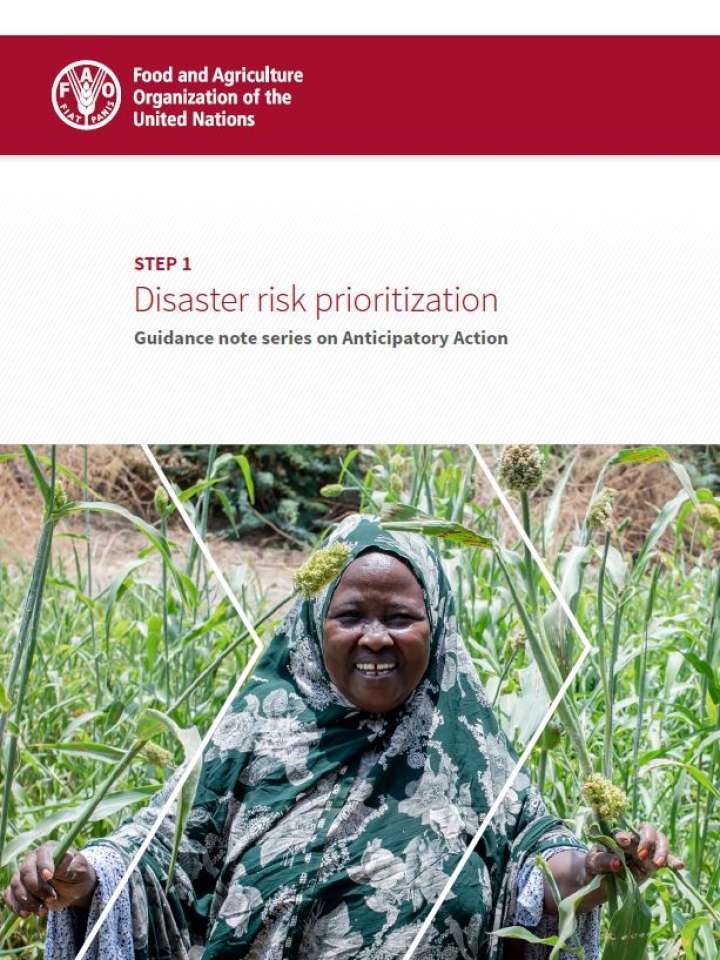Step 1: Disaster risk prioritization: Guidance note series on Anticipatory Action
This publication is part of a series of four core guidance notes providing direction on how to identify and prioritize risks (Step 1 – disaster risk prioritization), and accordingly establish an early warning system for Anticipatory Action (Step 2 – early warning systems), design and implement Anticipatory Action programmes (Step 3 – Anticipatory Action programming), and finally assess the impact of such programmes (Step 4 – impact analysis). Disaster risk prioritization is the first step as it provides the basis for the identification of early warning indicators, thresholds and triggers, as well as of appropriate anticipatory actions that can mitigate the impact of the prioritized risks on vulnerable populations.
The identification, understanding and, on such basis, the prioritization of disaster risks in a specific context is critical for the design of risk management policies and programmes, including disaster risk reduction, preparedness, Anticipatory Action and response interventions. The objective of this disaster risk prioritization guidance note is to support Anticipatory Action practitioners in identifying and prioritizing the main risks for agriculture and food security, including their frequency and seasonality as well as the livelihoods, locations and agricultural sectors they affect the most. This guidance note is not intended to replace a complete and detailed disaster risk assessment, but rather to present a tailored approach to evaluating and ranking risks as a key element of establishing an appropriate and time-sensitive Anticipatory Action system.
Explore further
